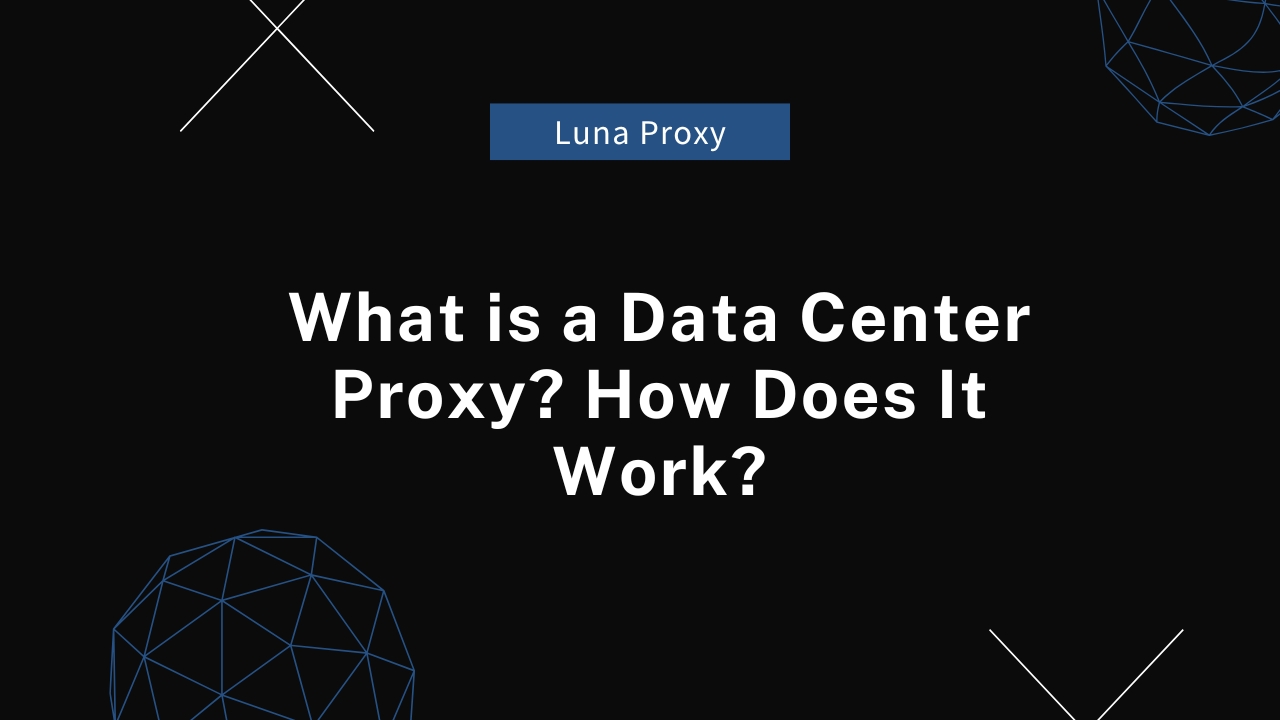
Residential Proxies menambahkan 300.000 IP AS pada tanggal 9 April.


Paket proxy eksklusif pengikisan data web AI [Lalu lintas tak terbatas, lebar pita 100G+]

 Language
Language

In the field of networking and online anonymity, proxies play a crucial role in masking user identity and enabling unrestricted access to various online platforms. One common type of proxy is the Data Center Proxy, widely used for tasks that require fast and scalable solutions. This article explains what a data center proxy is, how it operates, and its common applications.

A Data Center Proxy is an IP address that comes from a secondary corporation rather than an Internet Service Provider (ISP). These proxies are not tied to a physical location like residential or mobile proxies but are hosted on servers within data centers. Data centers are large facilities that house multiple servers, and these servers are equipped with high-speed internet connections and abundant computing power. The proxies provided by these data centers are used to route user traffic through their IP addresses, making it appear as though the traffic originates from the data center rather than the user's actual location
A data center proxy works by acting as an intermediary between the user and the target website. When a user sends a request to access a website, the request first goes through the proxy server. The proxy server, in turn, forwards this request using its own IP address instead of the user’s real IP. When the website responds, the data passes back through the proxy server and is forwarded to the user.
1. User makes a request: The user attempts to visit a website or make an online query.
2. Proxy intercepts the request: The data center proxy intercepts this request and replaces the user’s IP address with its own.
3. Request is forwarded: The modified request, now carrying the proxy’s IP address, is forwarded to the target server or website.
4. Website responds: The website processes the request and sends the response back to the proxy server.
5. Proxy relays the response: Finally, the proxy forwards the website’s response back to the user, maintaining the anonymity of the original request.
This intermediary process allows users to hide their actual IP address and circumvent geographic restrictions or bans.
- Scalability and Speed: Data center proxies are known for their scalability. Since data centers house multiple servers, users can access numerous IP addresses for large-scale tasks such as web scraping or running automated bots. Additionally, they provide high speeds, making them ideal for operations that require quick response times.
- Non-geolocated IPs: Data center proxies do not come from a user’s local ISP but from the data center's pool of IPs. This lack of physical connection to a residential address makes them easier to identify compared to residential proxies, but it also means they can handle larger volumes of traffic.
- Cost-effectiveness: Because data center proxies are not tied to physical residential devices and are easier to generate, they are often less expensive than residential or mobile proxies. This makes them a cost-efficient option for large-scale operations.
Data center proxies are used in a variety of scenarios, depending on the need for speed, scalability, and affordability. Some of the most common applications include:
- Web Scraping: For businesses or individuals collecting large amounts of data from websites, data center proxies provide a fast and efficient means of bypassing restrictions, such as rate limiting or IP bans. Multiple proxies can be used to distribute the workload across many IP addresses, reducing the chance of detection.
- SEO Monitoring and Testing: Marketing teams use data center proxies to test how websites appear in different regions and how various keywords perform. The speed and volume of requests required in these operations make data center proxies an ideal solution.
- Bypassing Geo-blocking: Although less effective than residential proxies at avoiding detection, data center proxies can be used to access content or services that are restricted by geographical location. Streaming services, gaming platforms, or social media sites often implement these restrictions, and proxies help bypass them.
- Ad Verification: Companies use data center proxies to verify the display of their ads across various websites and regions, ensuring that they are correctly displayed and not subject to fraud or manipulatio
- Easier Detection: Since data center proxies are not connected to a real ISP, websites can more easily identify and block them, especially for high-security services like banking or e-commerce platforms. Many websites now use sophisticated proxy detection techniques to filter out non-residential traffic.
- Shared IP Pools: In some cases, multiple users may share the same data center IP address, leading to potential overlap in usage. If one user engages in suspicious activity or triggers a ban, other users sharing the same IP may also face access issues.
- Less Anonymity Compared to Residential Proxies: Because data center IPs are often flagged by websites, users seeking the highest level of anonymity may prefer residential proxies, which are harder to detect since they mimic real user traffic from home networks.
Data center proxies are powerful tool for tasks requiring speed scalability, and cost-effectiveness. Their use in web scraping, SEO monitoring, and bypassing geo-blocking has made them a popular choice among businesses and individuals alike. However, users should also be aware of their limitations, particularly in scenarios where anonymity is paramount or websites employ advanced detection methods. By understanding how data center proxies work and their optimal use cases, users can better determine whether these proxies meet their specific needs.
